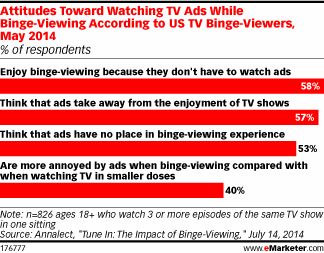There’s nothing like quarterly earnings reports to get an unvarnished look at just what’s happening with video game console sales. In between financial reports, we have to be content with whatever numbers companies release — which often isn’t anything concrete. Usually it’s a generality like “sales are strong” or “we’re pleased with the progress we are making” instead of “we sold 2.1 million consoles last quarter.” Financial reports, while they may be somewhat opaque, are still the correct numbers — if not, a company has more serious problems than how many consoles it sold.
The latest figures are in from Microsoft, Sony, and Nintendo, so it’s a good moment to compare not only how the companies are doing overall, but just how each company’s latest console is faring saleswise. This will give us an idea of how healthy the console market is at this moment in time, and some indication of how it might fare into next year.
Microsoft had a good quarter and a good year overall, with both revenue and income rising. Microsoft Corp. today announced revenue of $23.38 billion for the quarter ended June 30, 2014. Gross margin, operating income, and diluted earnings per share (“EPS”) for the quarter were $15.79 billion, $6.48 billion, and $0.55 per share, respectively.
When it comes to the Xbox, Microsoft did not release precise information. “Computing and Gaming Hardware revenue increased $274 million or 23 percent, driven by higher Surface and Xbox Platform revenue,” the company noted. “Xbox Platform revenue increased $104 million or 14 percent, driven primarily by increased console revenue. We sold in 1.1 million consoles in the fourth quarter, as we drew down channel inventory, compared to 1.0 million consoles during the prior year.”
Note a couple of important things about that last statement: Microsoft did not break out Xbox One sales from Xbox 360 sales, combining the two into one number; and the sales number is the amount sold in to retailers, not the number purchased by consumers. There’s plenty of Xbox inventory in the channel still, so Microsoft still has some work to do with the Xbox One despite the boost provided by the new $399 version. Still, Microsoft’s game business is doing well, and the Xbox One is selling well — even if it’s not at the level Microsoft would like yet.
Sony had an exceptional quarter, with investors responding to the earnings release by boosting the share price over 5 percent yesterday. Sony’s overall sales grew 5.8 percent, and operating income almost doubled (up 96.7 percent) as sales heated up and operational efficiencies were realized. The big driver of Sony’s sales and profit improvement, though was the fantastic performance of the Games & Network Services division, which saw sales jump 95.7 percent and income turn positive from last year’s loss. The reason is the PlayStation 4’s continued strong sales.

“Sales increased 95.7 percent year-on-year (an 86 percent increase on a constant currency basis) to 257.5 billion yen ($2.550 billion),” Sony noted. “This increase was primarily due to the contribution from sales of PS4 hardware which was launched in November 2013, as well as a significant increase in network services revenues accompanying the launch of the PS4. Sales to external customers increased 101% year-on-year. Operating income of 4.3 billion yen ($43 million) was recorded, compared to an operating loss of 16.4 billion yen in the same quarter of the previous fiscal year. This significant improvement was primarily due to the above-mentioned increase in sales, partially offset by a decrease in PlayStation3 software sales.”
As Microsoft did, Sony lumps sales of its newest console in with its older one, showing a total of 3.5 million PS4 and PS3 units sold in the quarter — though that number is sell-through, not sell-in. It’s the number customers purchased, not the number sold to retailers (which is what Microsoft reported). Sony’s consoles outsold Microsoft’s by more than three-to-one, in other words. Maybe “PlayStation 4, Xbox One” isn’t just the names of the two consoles, it’s the sales ratio.
Meanwhile, off in Nintendo’s separate corner of the console market, things are not so good. Nintendo’s sales dropped yet again, with the company recording a loss of ¥9.9 billion, or $96 million, compared to last year’s net profit in the same quarter of ¥8.6 billion ($83.8 million). Sales dropped as well, down to ¥74.7 billion ($729 million) from last year’s ¥81.5 billion ($793.3 million). Nintendo blamed the shortfall on a lack of major new releases, even though Mario Kart 8 sold 2.82 million units on the Wii U.
The Wii U sold 500,000 units worldwide in the quarter, well up from last year’s 186,000 units in the same time period, bringing the total sold to date to 6.68 million units. That’s less than the PlayStation 4, and the Xbox One will probably be passing up the Wii U this year as well. While Mario Kart 8 helped, it’s clear most of the title’s sales went to existing Wii U owners rather than generating massive new Wii U sales.
The real disappointment for Nintendo is the drop in 3DS sales, which has been the company’s bright spot while the Wii U has struggled. Nintendo sold 820,000 units of the 3DS line, compared to 1.4 million units in the same quarter last year, a significant drop.
Nintendo left its forecasts for the year unchanged, when it expects to post a ¥20 billion ($195 million) profit after March 30. This is beginning to sound like last year, when Nintendo maintained optimistic year-end forecasts while quarterly numbers looked grim. This is placing even more pressure on the next quarters to do well, which may be hard with new releases only scheduled to hit near the end of next quarter. The slate is thin, meaning each title has to be a massive hit to make up the ground Nintendo needs.
While Nintendo may indeed make its numbers for the year if all goes very well, it’s hard to see any long term return to “Nintendo-like profits” (as CEO Iwata likes to say) without the introduction of new hardware, which probably wouldn’t happen until summer of 2015 at the earliest.
The console business overall, then, looks to be a great market for Sony, a pretty good market for Microsoft, and a very tough market indeed for Nintendo. The basics of the hardware and the price points of the consoles won’t change as we head into the holiday season; what may change is marketing. We may see different software bundles and promotions designed to boost sales, and the important thing to watch will be the overall marketing campaign and the spending for each company this fall.
Microsoft will probably want to spend heavily to catch up to Sony, and the Master Chief Collection will probably get a great deal of attention. Sony may well double down on its successful PS4 business by increasing the marketing spend to stay in the lead. Nintendo’s kept its marketing efforts in check for the last year — will we see Nintendo marketing unleashed this holiday season to effectively re-introduce the Wii U, push the Amiibo products and try for exceptional Super Smash Bros. sales It’s time to crack open that piggy bank, Nintendo, and spend some of the cash you’ve been hoarding on holiday marketing if you want to grab some console market share this Christmas.









